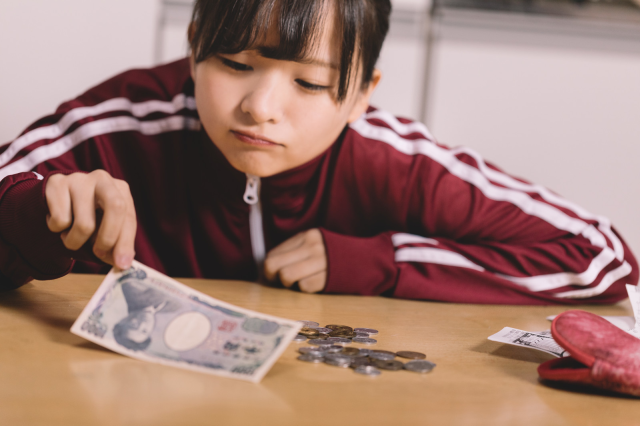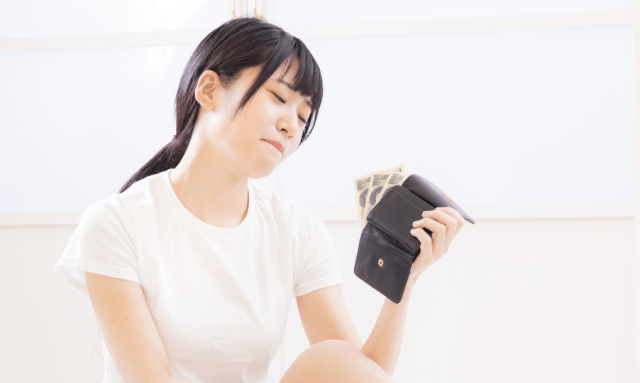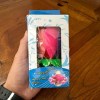
For those who aren’t planning to hang on to their monetary presents from grandma and grandpa, advancing their oshi is the top plan.
In Japan, New Year’s is traditionally celebrated by a trip back to your home town to spend time with relatives, a visit to your local shrine or temple to pray for health and prosperity in the year ahead, and/or eating mochi (which hopefully won’t kill you). But if you’re a kid, there’s an extra part of the New Year’s festivities: otoshidama, gifts of cash you receive inside small festive envelopes.
Just about every kid in Japan gets otoshidama from their grandparents, and the majority get envelopes from their parents, aunts, and uncles too. Add them all up, and it’s not unusual for Japanese children’s wallets to be 30,000 yen (US$272) heavier, if not more so, by the time winter break ends.
So what do they do with that windfall? To investigate, Japanese website Simeji polled Japanese girls between the age of 10 and 19, asking what they planned to do with their otoshidama and getting 977 responses. Japan being a society where stability and self-reliance are instilled as virtues from an early age, the top response was “I’m going to save it.” The number-two response, though, and thereby the top pick among girls who are actually going to spend their money, was “I’m going to use it to support my oshi.” or, in other words, their favorite anime character or idol singer.
How are you going to spend your otoshidama?
1. Savings
2. For my oshi
3. Books/manga
4. Clothing
5. Video games (including in-game purchases)
6. Going out with friends
7. Cosmetics/beauty salon services
8. Stationery
9. Tokyo Disneyland tickets
10. Smartphone
Oshi is a relatively recent addition to Japanese slang, coming from the word osu, which originally means “push” but in this case means to support a person or advance their position. Essentially, a girl’s oshi is the member of an anime cast or multi-vocalist idol group that she thinks should be the one in the spotlight. The belief is that if enough money gets thrown at merchandise for your oshi, producers/talent agencies will take notice and that individual will start getting a more prominent role.
The logic isn’t entirely unsound, seeing as merchandising has become a more powerful driving force in the anime and idol industries than ever before. It’s also worth noting that many male otaku have oshi of their own too, but the oshi enthusiasm in Simeji’s for-girls survey is something that probably wouldn’t have manifested so strongly a generation of fans ago, and is another sign of otaku interests gradually moving towards becoming mainstream entertainment.
Source: Simeji via Niconico News/My Navi News via Jin
Top image: Pakutaso
Insert images: Pakutaso
● Want to hear about SoraNews24’s latest articles as soon as they’re published? Follow us on Facebook and Twitter!


 Flush with New Year’s present cash, Japanese kids can now look forward to…saving it
Flush with New Year’s present cash, Japanese kids can now look forward to…saving it Japanese otaku now have special trash box just for merch of their former anime and idol crushes
Japanese otaku now have special trash box just for merch of their former anime and idol crushes Do Japanese superfans really want to marry their favorite idol?【Survey】
Do Japanese superfans really want to marry their favorite idol?【Survey】 Oshi kamidana – Literal altars you can build to enshrine your favorite anime character or idol
Oshi kamidana – Literal altars you can build to enshrine your favorite anime character or idol Some important Christmas shopping advice for parents of otaku and fujoshi kids
Some important Christmas shopping advice for parents of otaku and fujoshi kids Foreigner’s request for help in Tokyo makes us sad for the state of society
Foreigner’s request for help in Tokyo makes us sad for the state of society Japanese city loses residents’ personal data, which was on paper being transported on a windy day
Japanese city loses residents’ personal data, which was on paper being transported on a windy day Harajuku Station’s beautiful old wooden building is set to return, with a new complex around it
Harajuku Station’s beautiful old wooden building is set to return, with a new complex around it Akihabara pop-up shop sells goods made by Japanese prison inmates
Akihabara pop-up shop sells goods made by Japanese prison inmates Japanese ramen restaurants under pressure from new yen banknotes
Japanese ramen restaurants under pressure from new yen banknotes Celebrate another year of life by putting it in jeopardy with this birthday candle flower
Celebrate another year of life by putting it in jeopardy with this birthday candle flower Sandwiches fit for a sumo served up in Osaka【Taste Test】
Sandwiches fit for a sumo served up in Osaka【Taste Test】 Doraemon found buried at sea as scene from 1993 anime becomes real life【Photos】
Doraemon found buried at sea as scene from 1993 anime becomes real life【Photos】 Ghibli Park now selling “Grilled Frogs” from food cart in Valley of Witches
Ghibli Park now selling “Grilled Frogs” from food cart in Valley of Witches Red light district sushi restaurant in Tokyo shows us just how wrong we were about it
Red light district sushi restaurant in Tokyo shows us just how wrong we were about it McDonald’s new Happy Meals offer up cute and practical Sanrio lifestyle goods
McDonald’s new Happy Meals offer up cute and practical Sanrio lifestyle goods All-you-can-drink Starbucks and amazing views part of Tokyo’s new 170 meter-high sky lounge
All-you-can-drink Starbucks and amazing views part of Tokyo’s new 170 meter-high sky lounge French Fries Bread in Tokyo’s Shibuya becomes a hit on social media
French Fries Bread in Tokyo’s Shibuya becomes a hit on social media Studio Ghibli releases new action figures featuring Nausicaä of the Valley of the Wind characters
Studio Ghibli releases new action figures featuring Nausicaä of the Valley of the Wind characters New private rooms on Tokaido Shinkansen change the way we travel from Tokyo to Kyoto
New private rooms on Tokaido Shinkansen change the way we travel from Tokyo to Kyoto Studio Ghibli glasses cases let anime characters keep an eye on your spectacles
Studio Ghibli glasses cases let anime characters keep an eye on your spectacles Tokyo Tsukiji fish market site to be redeveloped with 50,000-seat stadium, hotel, shopping center
Tokyo Tsukiji fish market site to be redeveloped with 50,000-seat stadium, hotel, shopping center Beautiful Ghibli sealing wax kits let you create accessories and elegant letter decorations【Pics】
Beautiful Ghibli sealing wax kits let you create accessories and elegant letter decorations【Pics】 Studio Ghibli releases Kiki’s Delivery Service chocolate cake pouches in Japan
Studio Ghibli releases Kiki’s Delivery Service chocolate cake pouches in Japan New definition of “Japanese whiskey” goes into effect to prevent fakes from fooling overseas buyers
New definition of “Japanese whiskey” goes into effect to prevent fakes from fooling overseas buyers Our Japanese reporter visits Costco in the U.S., finds super American and very Japanese things
Our Japanese reporter visits Costco in the U.S., finds super American and very Japanese things Studio Ghibli unveils Mother’s Day gift set that captures the love in My Neighbour Totoro
Studio Ghibli unveils Mother’s Day gift set that captures the love in My Neighbour Totoro New Japanese KitKat flavour stars Sanrio characters, including Hello Kitty
New Japanese KitKat flavour stars Sanrio characters, including Hello Kitty More foreign tourists than ever before in history visited Japan last month
More foreign tourists than ever before in history visited Japan last month New Pokémon cakes let you eat your way through Pikachu and all the Eevee evolutions
New Pokémon cakes let you eat your way through Pikachu and all the Eevee evolutions Sales of Japan’s most convenient train ticket/shopping payment cards suspended indefinitely
Sales of Japan’s most convenient train ticket/shopping payment cards suspended indefinitely Sold-out Studio Ghibli desktop humidifiers are back so Totoro can help you through the dry season
Sold-out Studio Ghibli desktop humidifiers are back so Totoro can help you through the dry season Japanese government to make first change to romanization spelling rules since the 1950s
Japanese government to make first change to romanization spelling rules since the 1950s Ghibli founders Toshio Suzuki and Hayao Miyazaki contribute to Japanese whisky Totoro label design
Ghibli founders Toshio Suzuki and Hayao Miyazaki contribute to Japanese whisky Totoro label design Tokyo’s most famous Starbucks is closed
Tokyo’s most famous Starbucks is closed One Piece characters’ nationalities revealed, but fans have mixed opinions
One Piece characters’ nationalities revealed, but fans have mixed opinions We asked a Uniqlo employee what four things we should buy and their suggestions didn’t disappoint
We asked a Uniqlo employee what four things we should buy and their suggestions didn’t disappoint Princesses, fruits, and blacksmiths: Study reveals the 30 most unusual family names in Japan
Princesses, fruits, and blacksmiths: Study reveals the 30 most unusual family names in Japan Dedicate your savings to your oshi of choice with this new buildable offertory box
Dedicate your savings to your oshi of choice with this new buildable offertory box Support your faves and avoid oshikatsu burnout — advice from our resident otaku
Support your faves and avoid oshikatsu burnout — advice from our resident otaku Japanese company allows workers to take vacation to grieve if favorite idol singer gets married
Japanese company allows workers to take vacation to grieve if favorite idol singer gets married The anime crush savings plan: Woman explains how to save thousands of dollars, have fun doing it
The anime crush savings plan: Woman explains how to save thousands of dollars, have fun doing it Tokyo police create public service warning about kids obsessing over their favorite male idols
Tokyo police create public service warning about kids obsessing over their favorite male idols Let’s eat our favorite anime characters’ hair, says Tokyo cafe
Let’s eat our favorite anime characters’ hair, says Tokyo cafe At what age should parents stop giving kids New Year’s otoshidama money? Japanese netizens answer
At what age should parents stop giving kids New Year’s otoshidama money? Japanese netizens answer A massive photo collection of the coolest anime figures from Winter Wonder Festival
A massive photo collection of the coolest anime figures from Winter Wonder Festival Japan’s newest capsule toys: Buff shirtless dude torso cushions, sometimes with very pink nipples
Japan’s newest capsule toys: Buff shirtless dude torso cushions, sometimes with very pink nipples Hello Kitty teams up with Indian action movie RRR for RRR x Sanrio Characters merch line and shop
Hello Kitty teams up with Indian action movie RRR for RRR x Sanrio Characters merch line and shop We got a massage and talked games at Tokyo clinic made for and run by otaku
We got a massage and talked games at Tokyo clinic made for and run by otaku How much should we give in a New Year’s otoshidama without looking like a jerk?
How much should we give in a New Year’s otoshidama without looking like a jerk? Celebrate your oshi’s birthday in style with this fully customisable cake
Celebrate your oshi’s birthday in style with this fully customisable cake 85-year-old great-grandmother from Hiroshima is Japan’s newest virtual YouTuber/idol【Video】
85-year-old great-grandmother from Hiroshima is Japan’s newest virtual YouTuber/idol【Video】 Oshi stick for taking photos of photos of your favorite celebs and characters, selling at Daiso
Oshi stick for taking photos of photos of your favorite celebs and characters, selling at Daiso
Leave a Reply